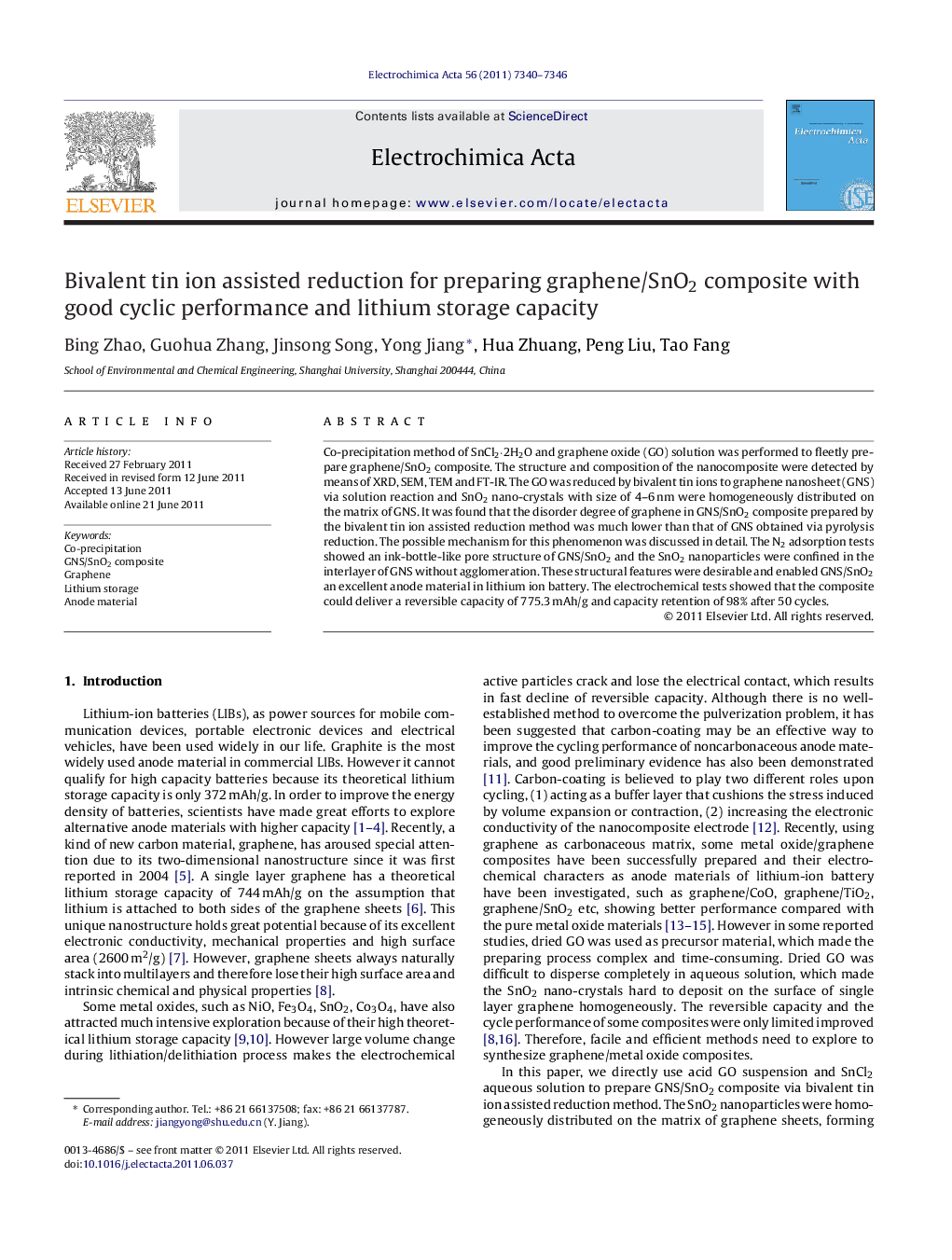| کد مقاله | کد نشریه | سال انتشار | مقاله انگلیسی | نسخه تمام متن |
|---|---|---|---|---|
| 189286 | 459677 | 2011 | 7 صفحه PDF | دانلود رایگان |

Co-precipitation method of SnCl2·2H2O and graphene oxide (GO) solution was performed to fleetly prepare graphene/SnO2 composite. The structure and composition of the nanocomposite were detected by means of XRD, SEM, TEM and FT-IR. The GO was reduced by bivalent tin ions to graphene nanosheet (GNS) via solution reaction and SnO2 nano-crystals with size of 4–6 nm were homogeneously distributed on the matrix of GNS. It was found that the disorder degree of graphene in GNS/SnO2 composite prepared by the bivalent tin ion assisted reduction method was much lower than that of GNS obtained via pyrolysis reduction. The possible mechanism for this phenomenon was discussed in detail. The N2 adsorption tests showed an ink-bottle-like pore structure of GNS/SnO2 and the SnO2 nanoparticles were confined in the interlayer of GNS without agglomeration. These structural features were desirable and enabled GNS/SnO2 an excellent anode material in lithium ion battery. The electrochemical tests showed that the composite could deliver a reversible capacity of 775.3 mAh/g and capacity retention of 98% after 50 cycles.
• Graphene/SnO2 composite was prepared via bivalent tin ion assisted reduction method.
• The SnO2 nanoparticles were homogeneously distributed on the matrix of graphene sheets, forming an ink-bottle-like pores structure.
• The disorder degree of graphene in GNS/SnO2 was obviously diminished.
• The composite could deliver a reversible capacity of 775.3 mAh/g and capacity retention of 98% after 50 cycles.
Journal: Electrochimica Acta - Volume 56, Issue 21, 30 August 2011, Pages 7340–7346